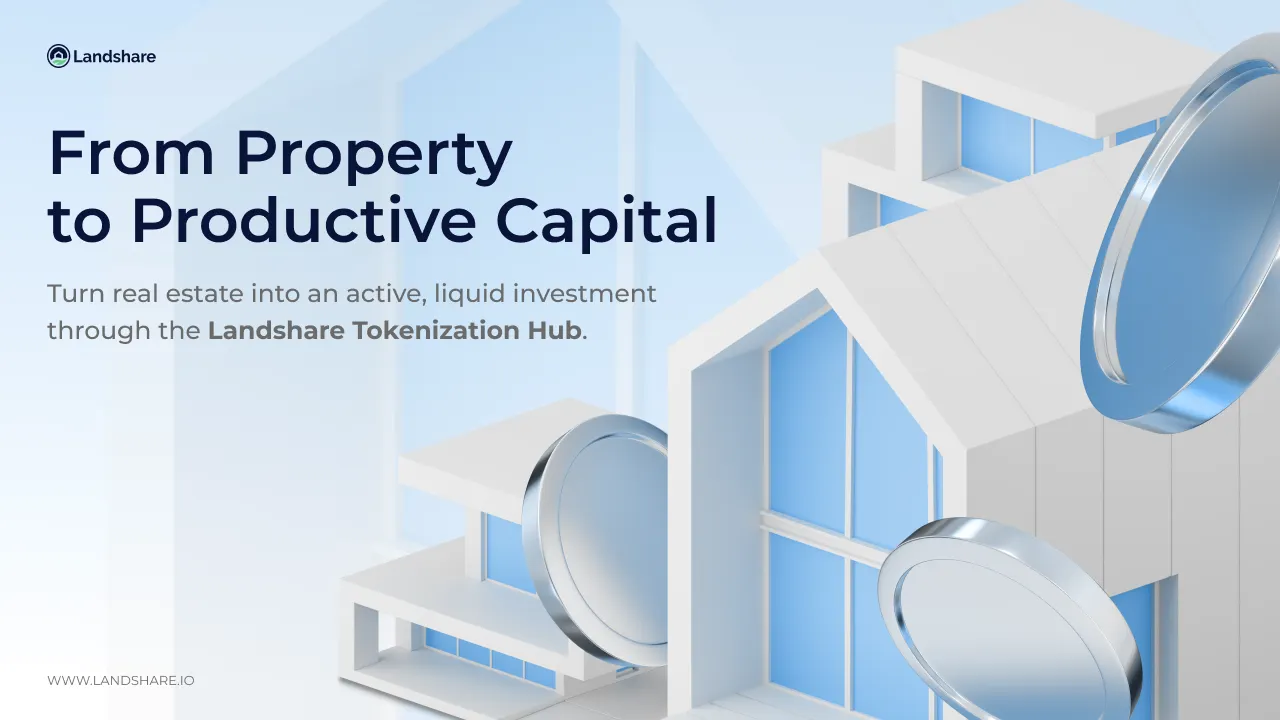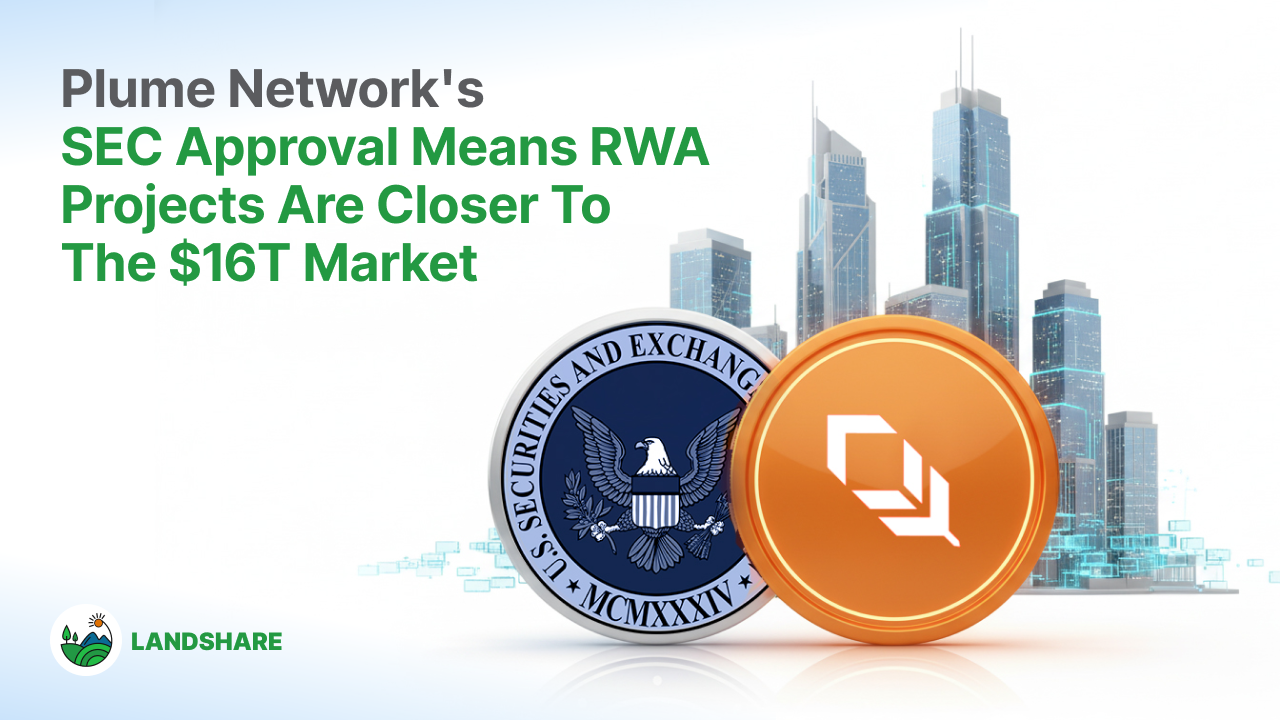Landshare Development Update–June 23rd, 2025
Landshare Team
%20(1).jpg)
The past few months have been an exciting and productive time for the Landshare ecosystem. From launching on a new blockchain network to expanding marketplace access, advancing our onboarding campaign, and continuing development on new features — we’ve been busy laying the foundation for the next phase of growth.
In this update, we’ll cover all the latest developments, including the Plume mainnet launch, our integration with Polytrade, ongoing progress with LSRWA Express and Lending Pools V2, and more. Let’s dive into what we’ve been building behind the scenes and what’s coming next!
Plume Network Mainnet
Earlier this June, we launched the LSRWA token on the Plume Network Mainnet — a major milestone for the Landshare ecosystem and a big step forward in our mission to bring real estate on-chain. We’re proud to be one of over 200 projects building on Plume and helping shape the future of RWA tokenization.
After 4+ years exclusively on BNB Chain, we’ve officially expanded, and investing in Landshare’s real estate pool is now more accessible than ever for Plume’s 3M+ community.
To celebrate, we kicked off the “Arriving at Plume” Zealy Event, where users competed for a 1,000 pUSD rewards pool and became the first to invest in LSRWA via Plume. The campaign brought in hundreds of new verified users, and we’re thrilled to continue growing our community on the first full-stack RWA Chain!

Partnership with Polytrade
Integrating with Plume Network has opened the door to 200+ ecosystem partners — and the first major step is already live: Landshare’s real estate properties are now listed on Polytrade, one of the top RWA marketplaces with access to 5,000+ real-world assets across 10+ chains.
With Landshare on Polytrade, anyone can invest in income-generating U.S. real estate and earn passive returns from both rental income and property appreciation — all in just a few clicks.
🔗 Start exploring: https://lnk.polytrade.finance/landshare
And that’s just the beginning — with more powerful integrations on the way to bring even more utility to the Landshare community. Stay tuned!

Onboarding Campaign
We’ve previously hinted at a major, ongoing onboarding campaign, and now it’s time to share more! This initiative is designed to level up our referral program and hit some big-picture goals:
- Educate: Help users explore the Landshare ecosystem step-by-step
- Activate: Drive engagement with core features like staking, LPs, and NFTs
- Boost on-chain activity: Incentivize real usage, not just clicks
- Retain: Reward users who stick around and stay active over time
To support this, we’re building a dedicated Onboarding Portal where users can track their progress, discover new tasks, and explore the ecosystem at their own pace. We’ll also add helpful hints and walkthroughs across key pages to guide new users naturally and drive interaction with our features.
While we don’t have a public launch date just yet, most of the campaign logic, the portal framework, and technical setup are already complete. We can’t wait to roll it out and bring more people into the Landshare journey!

LSRWA Express
LSRWA Express is a simplified, fully passive investment feature currently in development on the Landshare platform. It allows users to deposit USDC and earn real-world, asset-backed yield without the need to directly interact with LSRWA tokens, navigate secondary markets, or engage in DeFi mechanisms such as staking or liquidity farming.
We’ve previously published a detailed explanation of this feature, including how the epoch-based system works and the broader vision behind LSRWA Express. If you haven’t yet, you can explore the full documentation here: https://docs.landshare.io/platform-features/lsrwa-express
While there are no major updates to announce at this time, we want to assure the community that development is actively ongoing. Our technical team is focused on finalizing the backend infrastructure and preparing for internal testing. We’ll keep the community posted as we move closer to launch.

LSRWA Liquidity Updates
A core priority for the Landshare ecosystem is ensuring that LSRWA tokens can be traded at or near their true Net Asset Value (NAV). One of the most direct and effective ways to support this is by improving price stability on the DS Swap secondary market.
To address this, we’re introducing a strategic buyback mechanism: When DS Swap prices dip significantly below NAV, a portion of the rental income will be allocated toward buying back LSRWA tokens and removing them from circulation. This approach helps in two ways — it supports the market price while also acting as an anti-dilution mechanism, effectively increasing value for existing holders.
This system is designed to benefit the entire community, enhancing both liquidity and price integrity. We’ll continue to closely monitor LSRWA trading conditions and explore further improvements to ensure a healthy, accessible, and sustainable market for all participants.

Lending Pools V2 Coming Soon
We’ve seen a lot of anticipation around the launch of our updated lending pools, and we’re just as excited as you are. We know the wait has been long, building something secure, efficient, and impactful takes time. The new Pools V2, offering interest rates of up to 8%, will go live as soon as the Defactor team completes the migration to their updated protocol.
In the meantime, if you’re curious about what’s ahead, check out our latest article that dives deep into the power of combining tokenized real estate with cross-chain lending. Learn how this integration unlocks new capital, improves user flexibility, and enables yield opportunities across ecosystems:
💡 Real estate–backed liquidity
🔁 Borrow on one chain, collateral on another
🔗 Seamless multichain access to RWAs
Read more: Expanding Investment Horizons in the Multichain Era
EthCC Event in France
Connecting in person is a big part of building real relationships and growing any project — that’s why our CMO, Ivan Voznoi, is heading to EthCC in Cannes next week!
It’s shaping up to be a busy and exciting week, with Ivan planning to attend top-tier side events like the RWA Summit by Centrifuge, RWA Cannes by NFT Paris, Builders Night by MetaMask, and plenty more.
Wishing him a productive week full of new connections and opportunities. Time to bring tokenization to the Côte d’Azur! 🇫🇷💼🏝️

User Onboarding & Education
As Landshare continues to grow, one of our top priorities is ensuring that new users can navigate the ecosystem with clarity and confidence. While the Landshare platform offers a robust suite of features — from tokenized real estate and staking to liquidity pools and lending — we understand that the value we provide must be accessible and understandable from the very first interaction.
That’s why we’re focused on streamlining the onboarding experience across multiple fronts — including the upcoming LSRWA Express feature, a dedicated onboarding campaign, educational blog content, clearer communication strategies, and participation in Twitter Spaces to connect with the wider community.
We firmly believe that a smooth, intuitive onboarding experience is essential for long-term growth. Without it, even the most innovative products can remain underutilized or misunderstood. By lowering the entry barrier and offering ongoing education, we empower users to fully engage with the Landshare ecosystem — not just once, but for the long term.
Wrap Up
As we look ahead to the second half of 2025, our focus remains on delivering real value to our users and continuing to push the boundaries of what’s possible in RWA tokenization. Whether it’s simplifying onboarding, expanding to new ecosystems, or enhancing our DeFi tools — every update brings us closer to our long-term vision of making real estate investment accessible, transparent, and rewarding for everyone.
Thanks as always to our community for your continued support and feedback — we’re building this together. Stay tuned for more updates soon, and make sure to follow us on X (Twitter) and Telegram to be the first to know about what’s next!
Landshare October Recap
Landshare Team
October was a milestone month for Landshare – one that set the stage for the next era of on-chain real estate. From the official Landshare v2 announcement to new ecosystem updates, governance decisions, and exciting community initiatives, we’ve laid the groundwork for a future defined by growth, utility, and innovation.
This month, we introduced the framework that will redefine how investors, property owners, and DeFi users interact with real estate on-chain. Let’s recap the highlights 👇
Landshare v2 Announcement
The official unveiling of Landshare v2 signaled the start of a new chapter – one built around real utility, real yield, and real scalability.
Landshare v2 isn’t just an upgrade. It’s the foundation of a self-sustaining ecosystem where tokenized real estate finally reaches its full potential. The new system transforms stable assets into active yield-generating opportunities, seamlessly connecting traditional markets to DeFi.
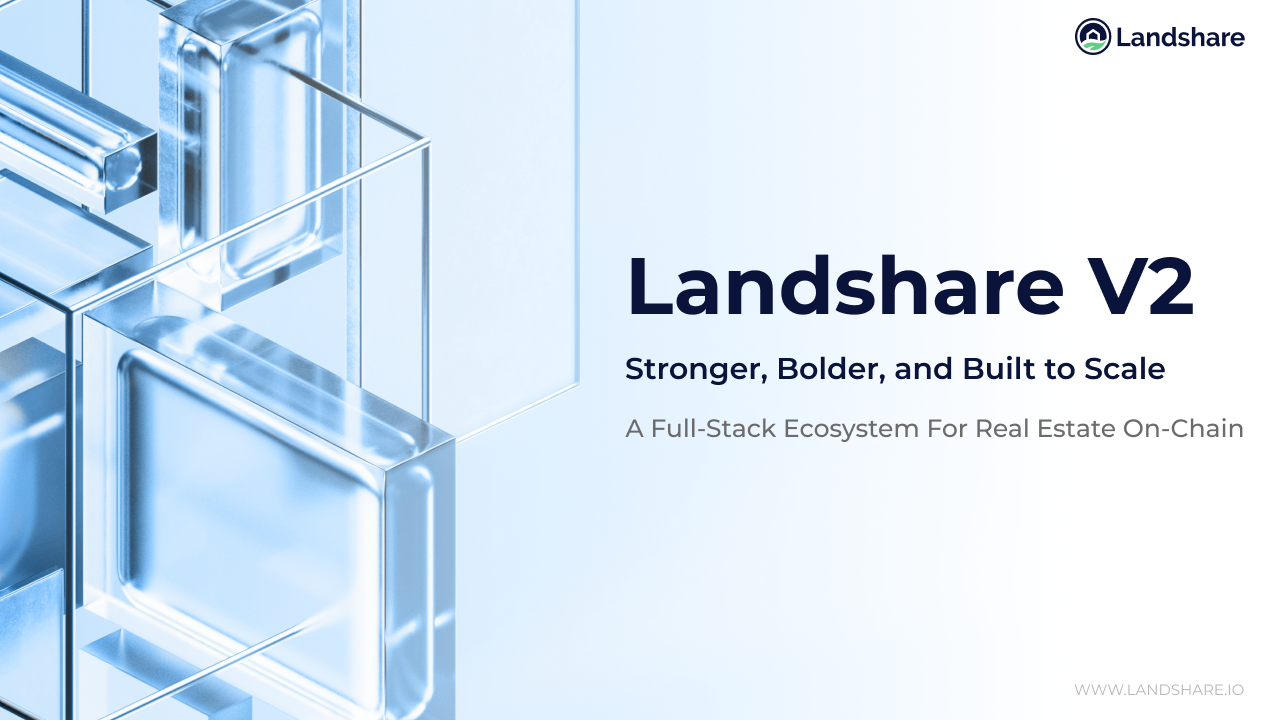
The Three Pillars of Landshare v2
In our follow-up deep dive, we explored the three core pillars that form the foundation of Landshare v2:
- The Real Asset Vault (RAV): A seamless gateway for stablecoin holders to earn real yield backed by tokenized properties.
- The Tokenization Hub: A complete solution for property owners to bring their assets on-chain.
- The DeFi Suite: Tools and incentives that amplify participation and utility across the ecosystem.
Together, these pillars create a self-sustaining growth loop, where every user and property strengthens the entire network.
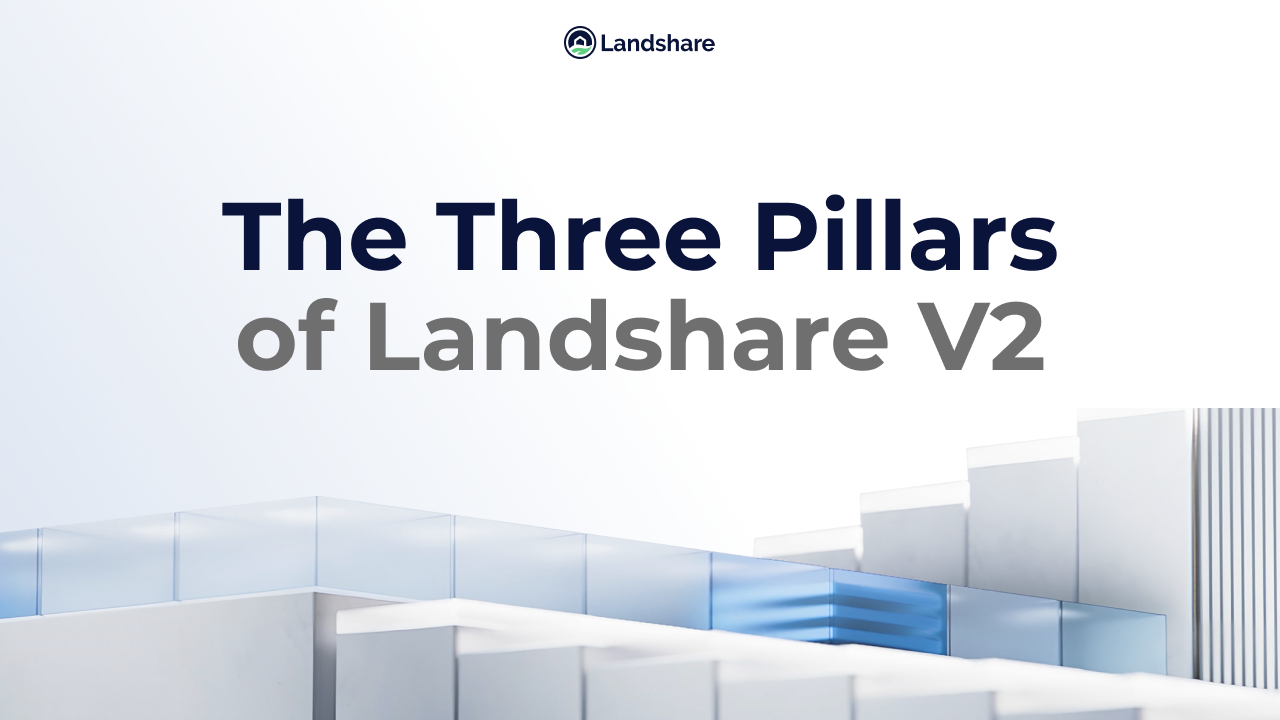
DAO Proposal Passed
In late October, the community voted to reduce LP emissions by 50% across both the LAND–BNB and LSRWA–USDT pools – with the proposal passing at 62.28% in favor.
This important step helps:
✅ Reduce daily LAND inflation
✅ Strengthen token scarcity and price stability
✅ Extend the reward pool lifespan
✅ Encourage long-term liquidity participation
The change will take effect within 48 hours of approval and marks another move toward a more balanced, sustainable economy for Landshare v2.
🗳️ View the full proposal and results
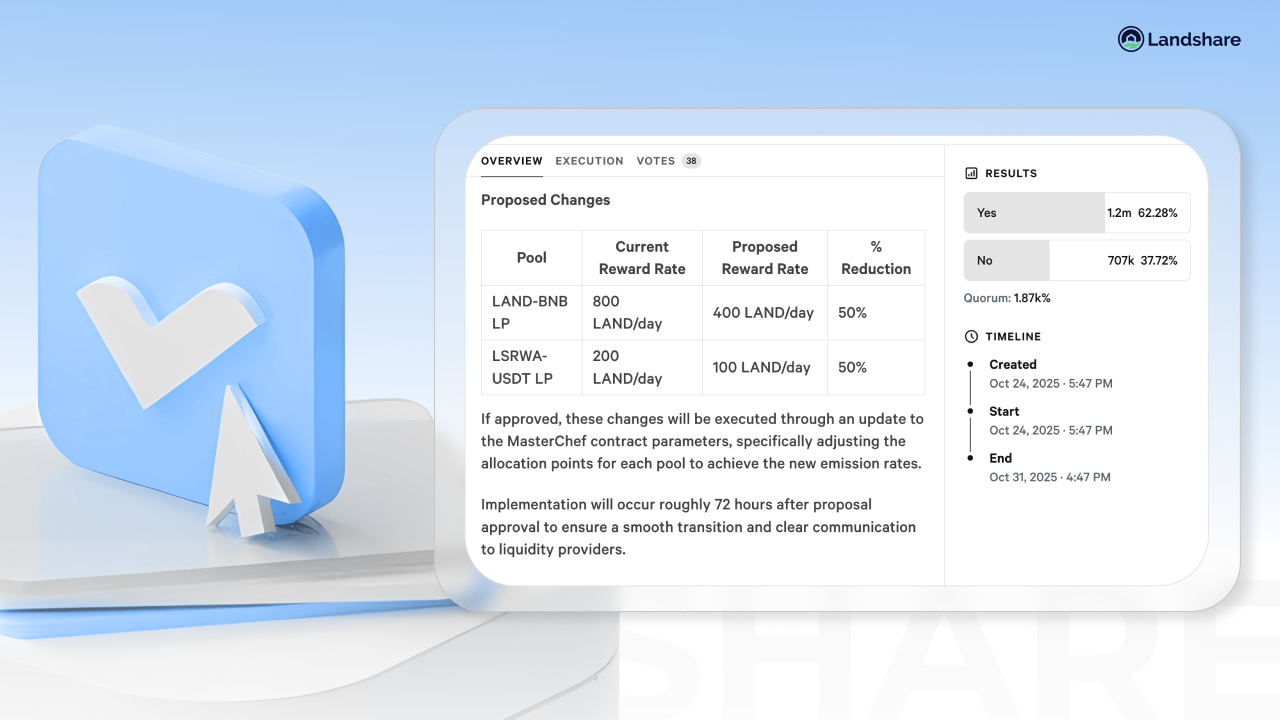
Tokenization Hub Breakdown
We released a comprehensive guide to the Landshare Tokenization Hub, explaining how property owners can now go beyond simple tokenization to access real investors, liquidity, and on-chain utility.
The Hub bridges traditional real estate with blockchain finance – creating a pathway for real-world assets to generate ongoing yield, transparency, and accessibility.

4.5M+ LAND Staked
October also marked another key milestone – over 4.5 million LAND tokens (nearly half of the total supply) are now staked in vaults. This incredible community achievement reflects growing confidence in Landshare’s long-term vision and token utility.
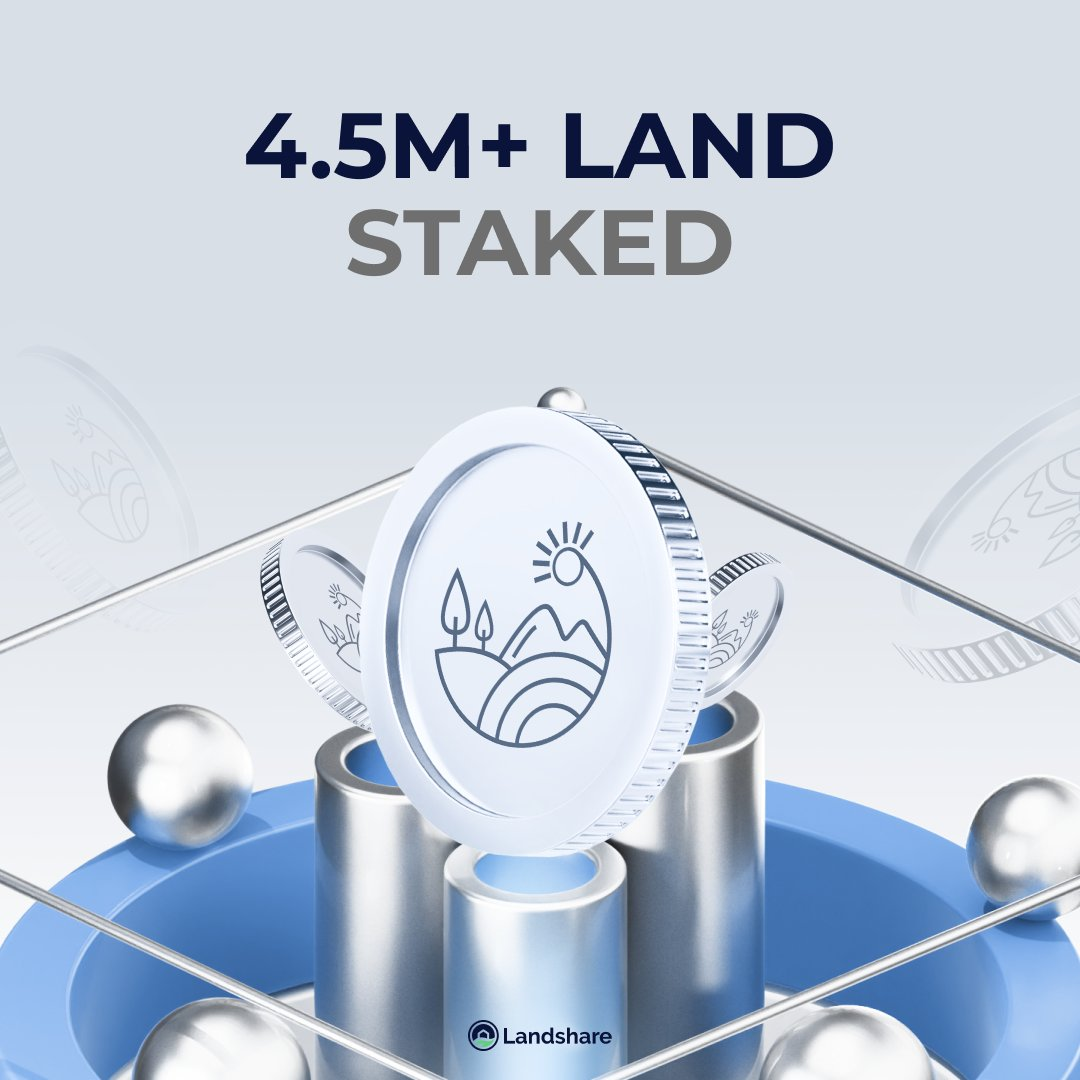
Community Townhall Incoming
We’re excited to announce our next Community Townhall, happening Thursday, November 6 at 12 PM CST or 6 PM CET on X Spaces!
Join Jordan (CEO), Travis (Co-Founder), and Ivan (CMO) as they discuss everything happening with Landshare v2, recent DAO proposals, and take your questions live.
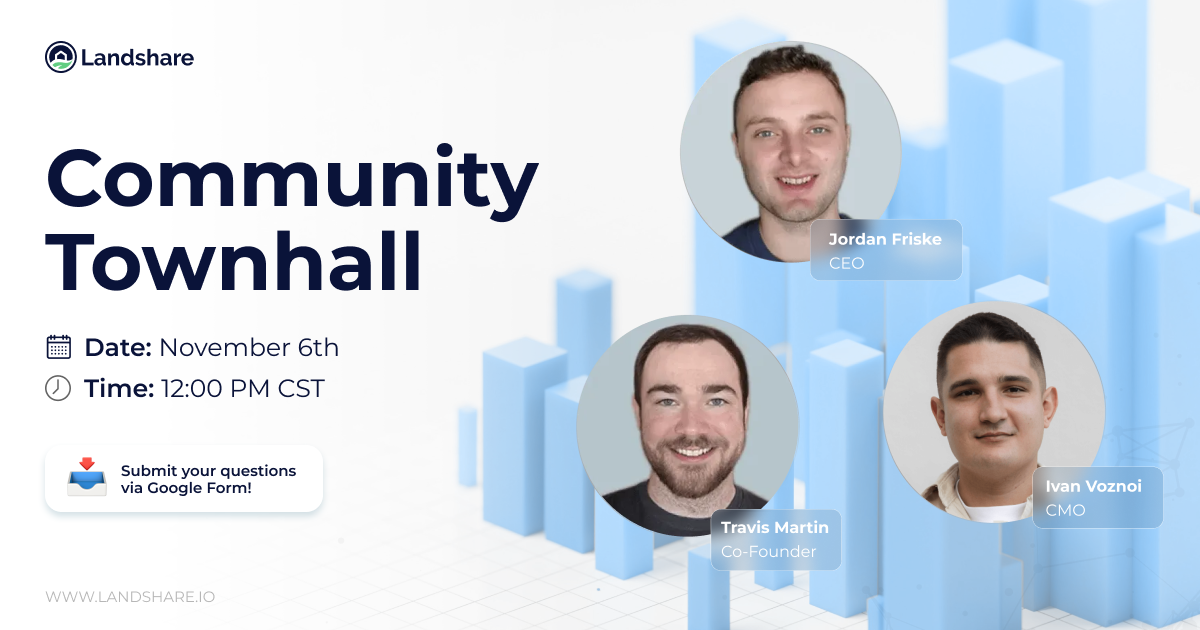
Looking Ahead
With Landshare v2 on the horizon, the foundation is set for a new phase of growth and adoption. In the coming weeks, we’ll be sharing more details on the RAV launch, the Points Campaign, and other major milestones driving our ecosystem forward.
Stay tuned – the future of real estate is being built on-chain, and we’re just getting started.
Tokenization Hub Breakdown
Landshare Team
Real estate tokenization has been a buzzword for years. Yet in practice, most projects have failed to move beyond press releases and empty promises. Too often, blockchain has been used as a veneer to package illiquid or low-quality assets, leaving investors with tokens that serve little purpose and property owners with no meaningful results.
Without investors, liquidity, or secondary markets, tokenization becomes little more than an on-chain spreadsheet — a digital record of ownership that no one can trade or invest in. For property owners, that means time and money spent “tokenizing” without achieving key goals: raising capital, expanding visibility, or unlocking value.
A Smarter Path Forward
For real estate tokenization to truly work, it needs to deliver tangible investment outcomes. After years of building and refining on-chain real estate products, Landshare has developed a model designed to do exactly that.
The Landshare Tokenization Hub transforms tokenization from a passive concept into an active investment process — connecting high-quality properties with real investors, liquidity pathways, and a live blockchain economy.
The Tokenization Hub Solution
Most platforms stop once a token is created. Landshare’s Tokenization Hub goes further , offering a complete pathway for property owners to bring their assets on-chain and immediately engage investors.
Each project is structured for success from day one, with:
- Customized tokenization models tailored to each property
- Transparent fundraising mechanics with defined soft and hard caps
- Built-in integration with the broader Landshare ecosystem
By connecting directly to Landshare’s existing network of investors and DeFi infrastructure, offerings can attract participation as soon as they launch. Once a fundraising goal is met, property tokens are deposited into the Landshare RWA Pool, linking them to ongoing liquidity, yield mechanisms, and secondary market exposure.
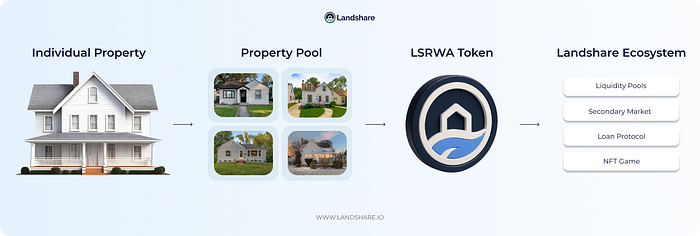
Why This Model Delivers Real Results
Where others leave property owners to manage marketing, compliance, and liquidity alone, the Tokenization Hub handles these as part of a unified process. This integration dramatically increases the likelihood of meeting fundraising goals and sustaining long-term engagement.
Integration with the Landshare RWA Token (LSRWA) is central to this model. Rather than isolated tokens with no market, each property becomes part of a shared, liquid environment that generates yield and investor participation. Individual assets can still be represented, extracted, or traded independently when needed.
For example, a multifamily property owner might tokenize 20% equity to raise $500,000 on-chain, connect the asset to the RWA Pool for ongoing yield, and maintain full transparency for investors — all within a compliant, accessible framework.
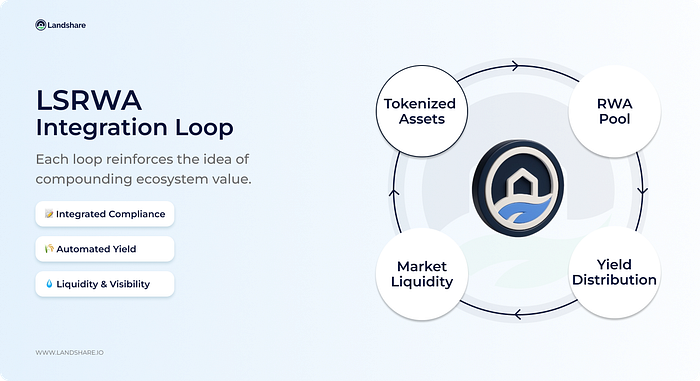
How It Works
- Tokenize the Property: Landshare collaborates with property owners to create a digital representation of equity, income rights, or hybrid participation.
- Launch the Offering: The property is listed on the Tokenization Hub with defined terms, caps, and transparent investor access.
- Fundraising & Validation: Investors participate directly on-chain. Once the soft cap is reached, funds are secured and the offering is finalized.
- Ecosystem Integration: Tokens are deposited into the Landshare RWA Pool, and investors receive LSRWA tokens representing pooled value and yield potential.
- Ongoing Value Creation: Property owners gain lasting benefits through liquidity, visibility, and investor engagement. As new assets are added to the pool, owners can rebalance between equity and cash, making real estate a more dynamic and liquid asset than ever before.

Built for Real-World Impact
The Landshare Tokenization Hub is more than a technical service — it’s a complete ecosystem designed to make real estate investment active, liquid, and accessible.
For property owners, it offers a streamlined way to raise capital and connect with global investors.
For investors, it provides exposure to yield-generating, on-chain assets backed by transparent real-world value.
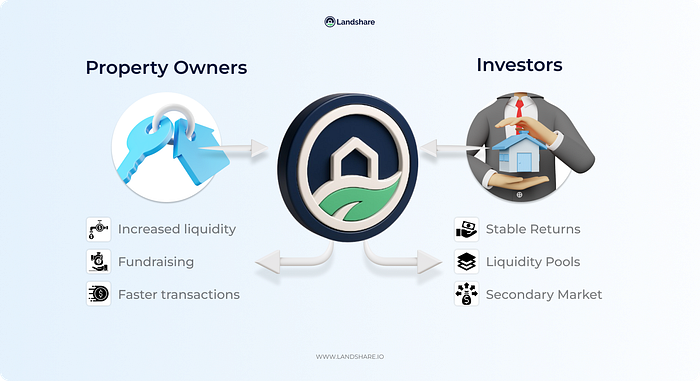
In an industry crowded with static tokens and overhyped promises, the Tokenization Hub delivers what tokenization was always meant to achieve — real outcomes, real liquidity, and real-world results.
🏡 About Landshare
Landshare is a tokenized real estate ecosystem that enables seamless investment in real-world assets on the blockchain. With Landshare, you can own a share of a real-world property simply by holding our RWA Tokens ($LSRWA). Our platform offers a secure, transparent, and efficient way to invest in real estate without traditional barriers.
- Website: landshare.io
- Twitter: @Landshareio
- Community: t.me/landshare
Plume Network's SEC Approval Means RWA Projects Are Closer to the $16T Market
Landshare Team
On October 6, Plume Network announced on its social media that it had been approved to be an SEC-registered transfer agent. This is a big milestone for the RWA industry, signaling that the traditional financial system is welcoming tokenized assets.
Transfer agents basically manage important back-end work and are the official record-keepers for securities issuers. So, essentially, they maintain shareholder registries, record ownership changes, issue certificates, and handle other corporate actions.
Plume’s approval means these critical functions can now be managed on-chain for tokenized securities. This is a pretty big deal, as it gives Plume and its users formal regulatory standing under U.S. law for on-chain securities.
Experts believe that this approval can boost the global RWA market, and top players like Landshare can benefit from it due to the increased regulatory clarity.
Why is the SEC’s Approval Important for Plume Network?
So, first, understand the roles of a registered transfer agent to get a better understanding of its importance.
In traditional finance, a transfer agent is usually a company or bank that tracks who owns a company’s securities and facilitates trades. They ensure every share transfer, stock split, or dividend payment is accurately recorded and reported. Now, let’s understand how this traditional role will work in the world of blockchain.
Post Link
By replicating these roles on-chain, Plume’s platform can securely log every token sale or dividend distribution in an immutable ledger, while also syncing with regulators. As Plume explains, its transfer-agent protocol will “link cap tables and reporting directly to SEC and DTCC systems”.
This means tokenized equity and debt on Plume can behave like traditional securities, but will be managed better with the help of blockchain technology.
Plume’s CEO believes that this regulation “exists to protect investors’ rights as shareholders,” and Plume’s on-chain solution is meant to simplify the processes under that framework.
Its Impact:
Experts believe that the registration will open up several doors for the RWA market because of the ‘trust factor’. Being registered means there are no risks as far as legality is concerned. When an industry or its top player receives a green flag from the government regulatory agencies, institutional capital follows.
BlackRock, Fidelity, JP Morgan, etc., are already looking to build blockchain-based products. This will further invite them to join the RWA growth story and possibly super-boost it.
Moreover, another important benefit is that tokenized securities can now flow through compliance obstacles. This means issuance times can be cut from months to weeks with the help of smart contracts. Similarly, on-chain dividends and ICOs can enjoy the same legal protections as Wall Street offerings.
What Does This Mean For The RWA Market?
Plume’s win comes at a time when analysts are already forecasting a massive growth in tokenized RWAs over the next decade. Institutions now value tokenization as a way to digitize everything from private credit to real estate. Also, the numbers are pretty optimistic as well.
A Boston Consulting Group report estimated the global asset-tokenization market could reach about $16.1 trillion by 2030. The industry has already grown by almost 380% in the past three years. To put things into perspective, today’s entire crypto market cap is smaller than those figures. Even some of the more conservative forecasts still show multi-trillion growth.

If these estimates can materialize in the days to come, RWA is well-positioned to be one of the largest markets in the world of modern finance.
Moreover, the external conditions are favoring this industry. Governments and regulators worldwide are creating proper frameworks. For instance, Asia-Pacific markets are running pilots for digital bonds and crafting standardized rules for security tokens.
These developments and the excitement of retail investors in this category build confidence that the $16T opportunity is actually very real.
How Will Landshare Benefit From This?
Landshare stands at the forefront of benefiting from this opportunity because of its early entry and real-world utility. This is very important as institutions seek new projects that have use cases that can help them capture a considerable market share.
Moreover, Landshare already operates as a compliant RWA platform. For instance, each Landshare RWA Token (LSRWA) is a security token representing fractional shares of a U.S. real estate portfolio, and buyers must pass KYC/AML checks.
The fact that regulators are now approving on-chain transfer agents shows the industry’s efforts are finally paying off. Here are some more factors that can help Landshare be one of the top RWA contenders:
1. Regulatory Credibility: Plume’s SEC status essentially means that tokenized securities can operate within established rules. Landshare’s approach aligns with these principles. So, investors can be assured that their projects sit within a legal framework designed to protect shareholders.
2. Investor Confidence: Every step toward clear regulation lifts confidence. The recently passed GENIUS Act, the SEC’s staff statements on liquid-staking, and the Trump administration’s overall outlook towards the crypto market have been fairly positive.
Similarly, Plume being approved as a SEC-registered blockchain transfer agent tells retail and institutional investors that projects like Landshare aren’t mere experiments. They’re rather a part of a regulated financial evolution.
Moreover, it means regulators see value in on-chain tokens, and that kind of signal helps legitimize the space Landshare operates in.
3. Landshare’s Own Progress: Landshare isn’t about hype. It is rather focused on delivering value from day one. The project has already sold four houses on the BNB chain. It is also providing consistent rental returns to the investors in its properties.
Moreover, the team remains focused on delivering stable, compliant returns from real estate growth.
Conclusion
So, now we know that the recent news was about more than just Plume Network being approved by the SEC to be a transfer agent. It rather has a much bigger impact on the RWA market as a whole.
While the industry continues to grow, for Landshare, it is the right time to innovate further and add more value to consumers’ lives.






